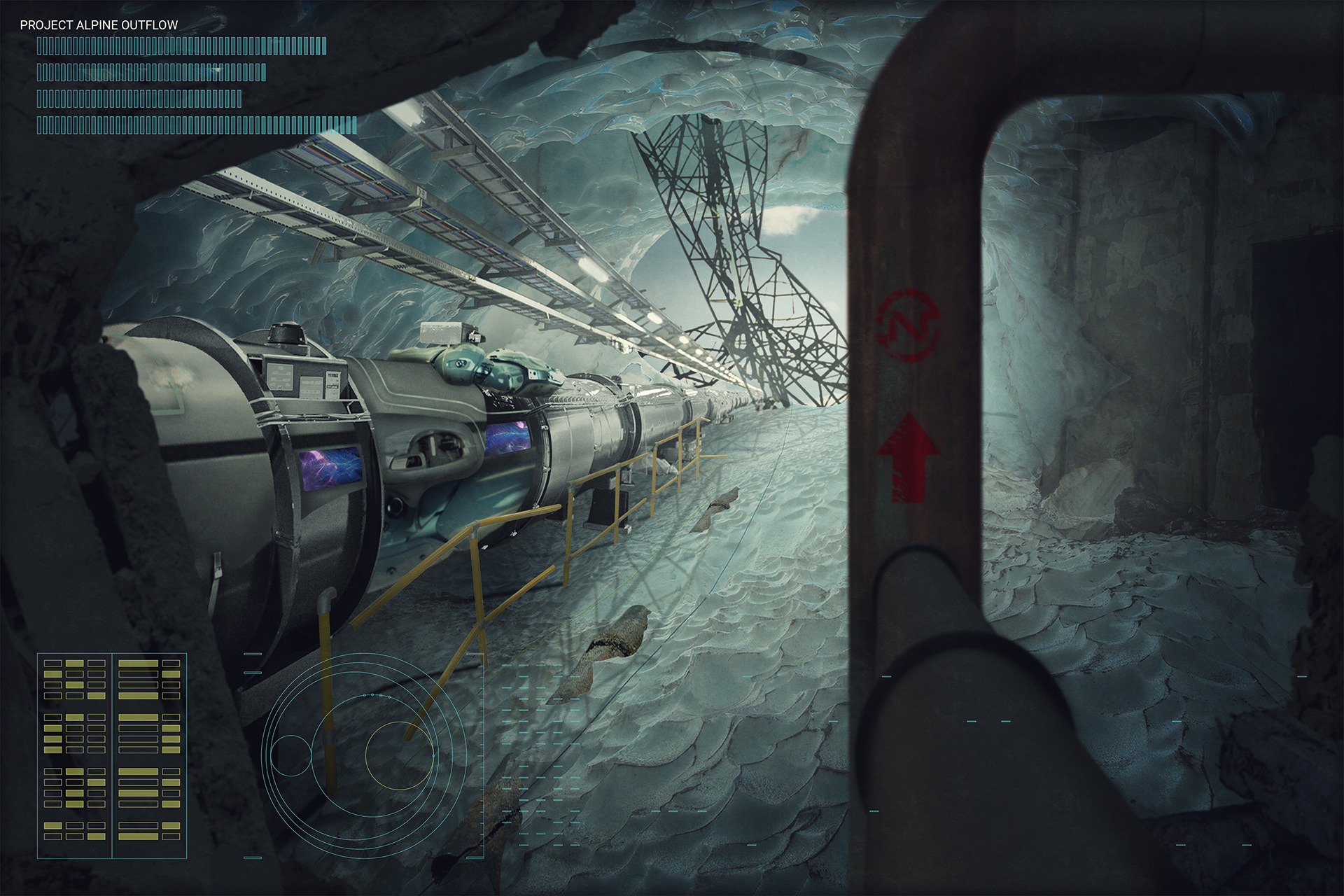︎︎
The Power Structure: Iceland 2036-2056









In Iceland, 99% of electricity is produced from renewable resources, 30% is from geothermal and 69% is from hydroelectric production. In recent history, the demand for renewable energy has instantiated the use of experimental drilling and energy harnessing technologies.
Since 2020, Iceland has successfully developed two new types of energy production: the deep drilling project, which taps into magma below the earth's surface for a still yet undetermined supercritical point, and the joining of geothermal and hydroelectric power. Much of what we understand that occurs below the surface of Iceland is still being developed, much by my colleague here, but we have only very recent research to speculate on the impact and long term effects of these experimental projects.
Iceland is one of the most geologically active sites on the planet; providing vast and variegated energy-rich geologic compositions. Chasing the country’s embedded energy reserves has increased the frequency at which wells are drilled.
As commercial energy development accelerates so does the encounter with new dissolved solids, toxic metals, and corrosive gasses. In order to meet the demand for energy production, Networx, a multinational power conglomerate developed roving regulating and ventilation chambers that are able to be repositioned over ongoing mining operations.
The “beasts” or dýrið, as they are referred to by locals, have become the center of an argument between conservation and industrialization. The extensive drilling operation is disguised below the surface, marked by 2-meter wide nozzles. Considering that the most visually dominant objects of the infrastructure are not stationary nor permanently fixed to the terrain has provoked a discussion of infrastructure’s sovereignty in the heated debate of contemporary conservation.
This work was included in Tomorrows an exhibition at the Onasis Foundation in Athens, Greece in 2017.
![]()
![]()
This work was included in Tomorrows an exhibition at the Onasis Foundation in Athens, Greece in 2017.

The following work was completed with Aymar Marino-Maza and Robert Yoos
On October 27, 2056 Networx Inc. held a small stakeholders meeting at their headquarters in Reykjavik, Iceland. Alex Gaspar, Chief Operations Officers, opened the conference expressing the nearly century long tenure Networx has experience as Iceland’s leading energy provider. The affordable access to energy caused many companies to make their mark on Iceland, making it a hub of international corporations.
On October 27, 2056 Networx Inc. held a small stakeholders meeting at their headquarters in Reykjavik, Iceland. Alex Gaspar, Chief Operations Officers, opened the conference expressing the nearly century long tenure Networx has experience as Iceland’s leading energy provider. The affordable access to energy caused many companies to make their mark on Iceland, making it a hub of international corporations.
One site in particular, Sector G, an existing geothermal plant opened in 1962 was devastated by an avalanche caused by an earthquake in 2036. The ongoing recovery of this site presented the company with a unique opportunity to study a particular phenomenon. Magmatic fissure swarms discovered below the ice provided the basis for Project Alpine, which combines geothermal and hydroelectric power. Project Alpine promises to reduce debilitating seismic activity ensuring stable energy supply with no more price surges in the energy supply.
To explain the ongoing excavation and documentation of Sector G, Mr. Gaspar invited longtime Networx Chief Recovery Management Officer John Lauritsen to speak about the complexity of the operation as well as the invaluable research it has provided. In addition to presenting new imaging and analytical technologies, Mr. Lauritsen presented a surprising discovery, that of the phreatomagmite; a new form of clastite discovered in the zone between the bottom of the glacial ice and the earth’s crust. As was explained later in the presentation, this rock was harvested to create the flexible boreholes that encapsulates Project Alpine’s critical mechanical components.
Concluding the presentation, Leila Fisher, head engineer for Project Alpine, explained the technological and ecological development of the project. She drew comparisons to other forms of geothermal and hydroelectric production, stating that the way in which the energy is accessed in Project Alpine ensures the machine has a symbiotic relationship to the naturally occurring phenomenon with the forces below ground that generate energy. These phenomena are the magmatic fissure swarms and the constant freezing and liquefying of the substrate of glacial ice.
Project Alpine has completed Phase I of development and has recently entered Phase II for mass-market energy development and distribution.











© 2024 Matthew Bohne — Brooklyn, New York